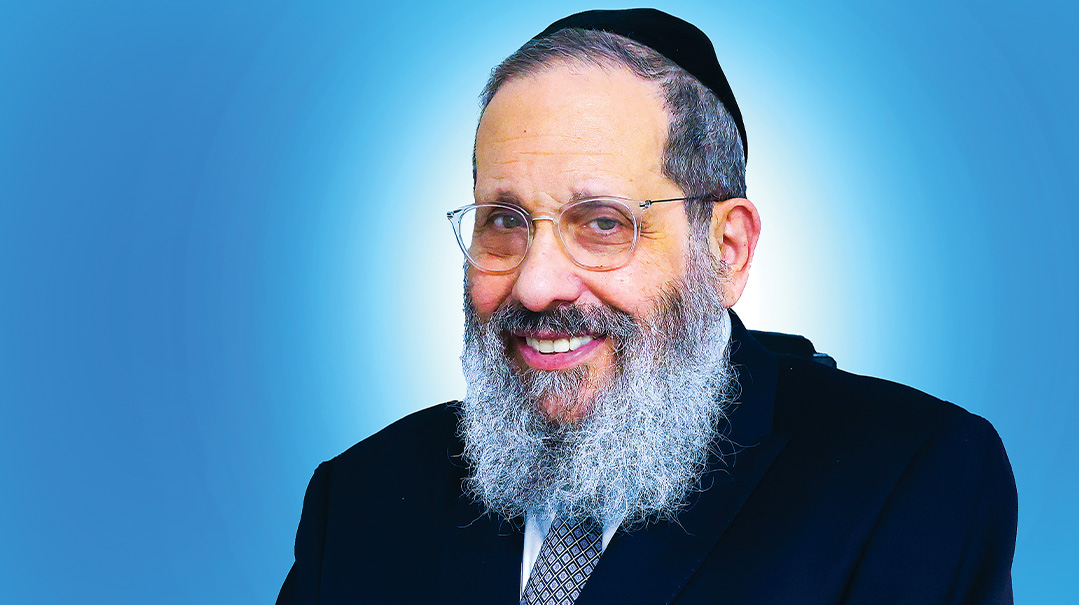Top Priority

Rabbi Shaya Cohen dissects the most acute chinuch challenges educators and parents are facing today

Photos: Itzik Roytman
Rabbi Shaya Cohen is one of the happiest people around — even as he’s immersed in the troubles and crises of the generation.
“There is no greater pleasure in this world than to elevate the lives of Hashem’s children,” he says with a combination of humility and satisfaction. “I can listen to tzaros all day long, because if I can move people just a little bit in the right direction and see results, there’s nothing like it.”
As rosh yeshivah of Yeshiva Zichron Aryeh and Kollel Ner Yehoshua in Bayswater, New York, and founder of Priority-1 and the newer “Teach to Reach” initiative, Rabbi Cohen is a popular address for parents and mechanchim in need of guidance as they face uncharted challenges. Priority-1 and Teach to Reach may not have been the first initiatives to deal with chinuch issues, but Teach to Reach is perhaps the first to offer a multi-pronged approach that incorporates hashkafah, Torah psychology, and chinuch methodology into one holistic, integrated approach that addresses both the head and the heart.
Of course, Rabbi Cohen points out, you cannot engage the head until you’ve connected to the heart. Today many educators complain that students’ attention spans have attenuated, yet he notes encouragingly, “Attention spans can be increased when there’s a strong rebbi-talmid relationship. It makes the student want to engage, because he knows he has a friend.”
R
abbi Cohen isn’t a person who likes to talk about himself. Instead, he gives the credit to his parents for instilling in him the values that have propelled him. He describes his father as having been possessed by a fiery passion for truth. “In his eyes, lying and cheating were the worst sins a person could do,” he says. From his mother, whom he describes as “a sensitive soul who would do anything for anyone, who felt their pain and did chesed for them,” he absorbed the ability to listen to others’ problems and the desire to help unconditionally.
As a young man, Rabbi Cohen’s proclivity for helping others together with an affinity for science led him to consider medicine as a career, and he enrolled in a pre-medical track in college. But he was also learning at Yeshivas Chofetz Chaim in Queens under Rav Henoch Leibowitz ztz”l, where he became so captivated by the Torah that he dropped out of college.
He continued his learning in Eretz Yisrael at Yeshiva Beis Aryeh under Rav Lazer Platchinsky ztz”l, a son-in-law of Rav Aryeh Levine (and hence a brother-in-law of Rav Yosef Shalom Elyashiv), whom Rabbi Cohen describes as “a giant who was a talmid of both the Chazon Ish and the Brisker Rav, something that was almost unheard of.” Rabbi Cohen would have the privilege not only to earn semichah with Rav Platchinsky, but to marry his daughter (a granddaughter of Rav Aryeh Levine).
In 1975 Rabbi Cohen was offered the opportunity to jump-start a yeshivah high school in LA’s San Fernando Valley suburbs, which at the time was virtually a Torah midbar. It didn’t take long — through giving classes, doing outreach, and running SEED programs staffed by Chofetz Chaim bochurim, he helped turn the community around (one young man who came along with him was a young mechanech who also liked to compose songs, by the name of Abie Rotenberg), to the extent that today it lacks for nothing: The Valley now boasts a day school, a yeshivah, a kollel, and shuls — all the infrastructure of frum life.
“In yeshivah, I had been imbued with two very basic, fundamental ideas: the receptivity of the Jewish neshamah to Torah, and the power of Torah to turn your life around,” Rabbi Cohen says. “In California, I saw it all to be true.”
Oops! We could not locate your form.







